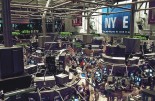BNY Mellon: Ten risks and opportunities in 2021
BNY Mellon: Ten risks and opportunities in 2021

Will 2021 be a year of promise or another year of pain? Alicia Levine and Liz Young, of BNY Mellon Investment Management’s Global Economics and Investment Analysis group, offer their take on what the next twelve months could bring.
Five possibele investment risks:
Risk one: The 5 January Georgia Senate election result could change the market dynamic. For now, the market is pricing in divided government (i.e. that the Senate stays in Republican hands).
At the same time, betting markets are also predicting the Senate races are getting tighter. If the Democrats were to gain the two Georgia seats, that would leave a 50/50 Senate with ties broken by the Vice-President.
Large tax increases could get enacted on business, capital, dividends, financial transactions, and small businesses. On the other hand, the fiscal spend could approach US$2 trillion for pandemic aid and US$1 trillion for infrastructure. In either case, there could be violent rotations across sectors.
Risk two: The vaccine rollout could stumble. There are many logistical challenges to mass vaccination, including manufacturing sufficient quantities in the next six months. The cyclical trade is predicated on a more normal life by the summer of 2021. Any sign that this timeline is too ambitious could cause volatility.
Risk three: Fiscal support could be further delayed. In the US, the labour market is slowing and many unemployed won’t be covered come January. The time for fiscal spend is now before there is permanent scarring in the labour market, particularly as individual states are starting to restrict activity in an effort to slow the spread of Covid-19.
A Republican Senate would likely compromise on a package of approx. US$1 trillion, which coupled with the delay, could fall under the headline of “too little because it is too late”.
Risk four: Globalisation could retreat. Conflict with China could morph from trade deficit and tariffs to one that is more existential and security-related. Europe and Asia could be forced to line up with either the US or Chinese spheres of influence. Additionally, any movement toward supply chain nationalism could shave corporate profit opportunities.
Risk five: Markets could go back to square one. We could witness a repeat of 2019’s sell-off in the new year after price action became extreme going into year-end. Bad Covid-19 data could slow down the recovery, prompting a headlong rush to tech and growth names once more as a markets exhibit a risk-off tone.
Five possible opportunities:
Opportunity one: Covid-19 could be crushed. The vaccination programme could be more successful than expected. With more supply coming onto the market in Q1 if Johnson & Johnson’s one-shot vaccination were successful, a 90% efficacy for all these vaccines might bring herd immunity faster than expected.
The economies of Europe, the UK, and the US would the most notable beneficiaries if this were the case.
Opportunity two: Investment opportunities could broaden. A weak US dollar and a global cyclical recovery could create tailwinds for Europe and Asia. Europe could benefit from increased fiscal spending while Asia could benefit from more successful disease control relative to the rest of the world.
Opportunity three: We could return to the Roaring Twenties. All developed countries have had unusually high savings rates during the pandemic. In the spring of 2020, many governments enacted strong fiscal support, but there was nowhere to use it. A successful vaccine protocol could lead to greater spending and pent-up demand could carry the global economy forward.
People could return en masse to the happy habits of travelling, socialising and spending on big ticket items to celebrate the end of the pandemic.
Opportunity four: Inequality could fall. Fiscal support and renewed economic activity – coupled with a revival of the small business segment – could help narrow the gap between the haves and have-nots. Small- and mid-cap stocks could rally as a result and benefit from the cyclical recovery and risk-on investor sentiment.
Opportunity five: Inflation could stay low. Despite massive fiscal and monetary stimulus, inflation could remain subdued. Central banks could continue with deeper QE or buy longer-dated maturities to keep yields down. No central bank would want to choke a cyclical recovery in its infancy especially since the plunge in the preceding year was so deep. Investor optimism would remain unchecked.










